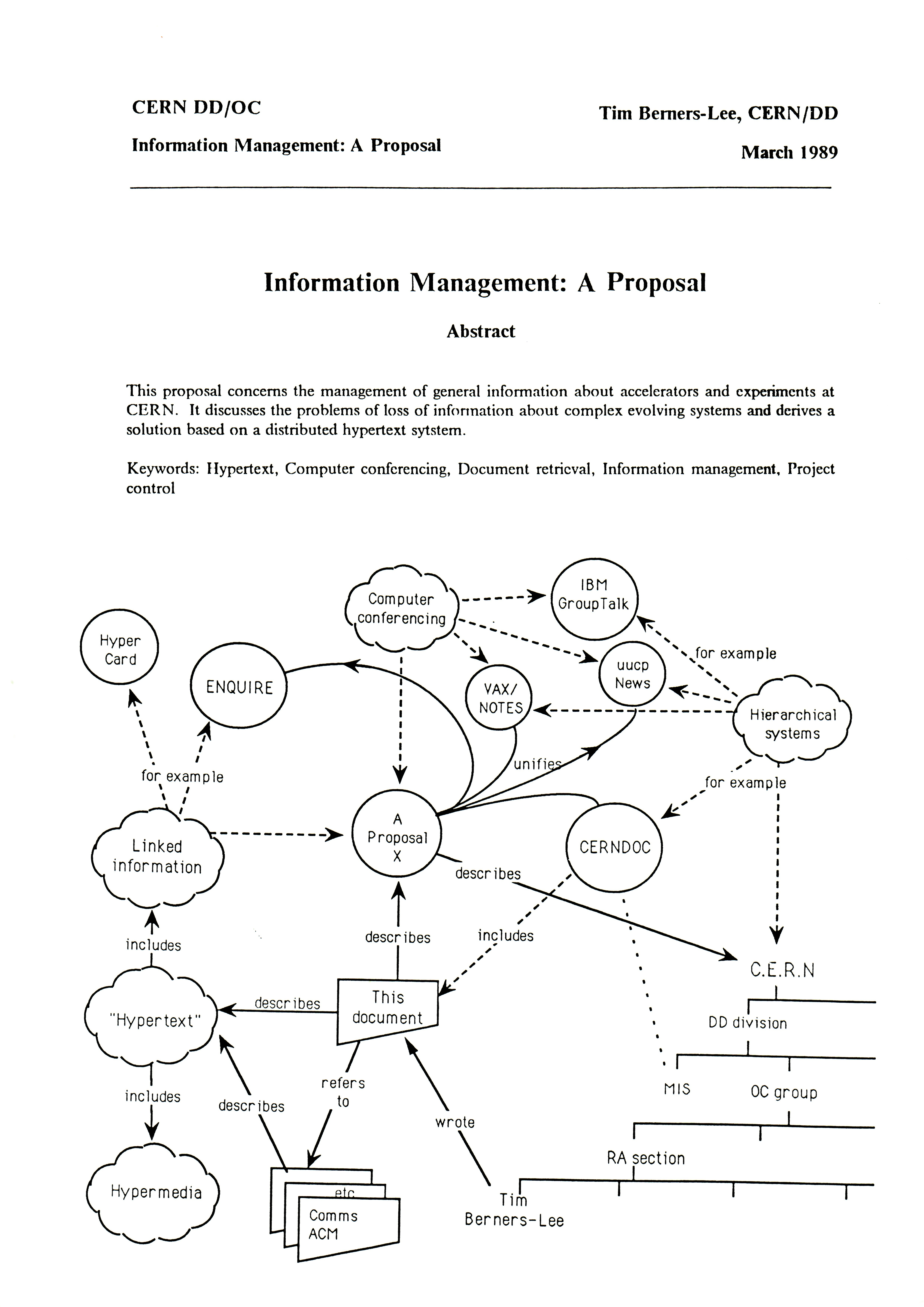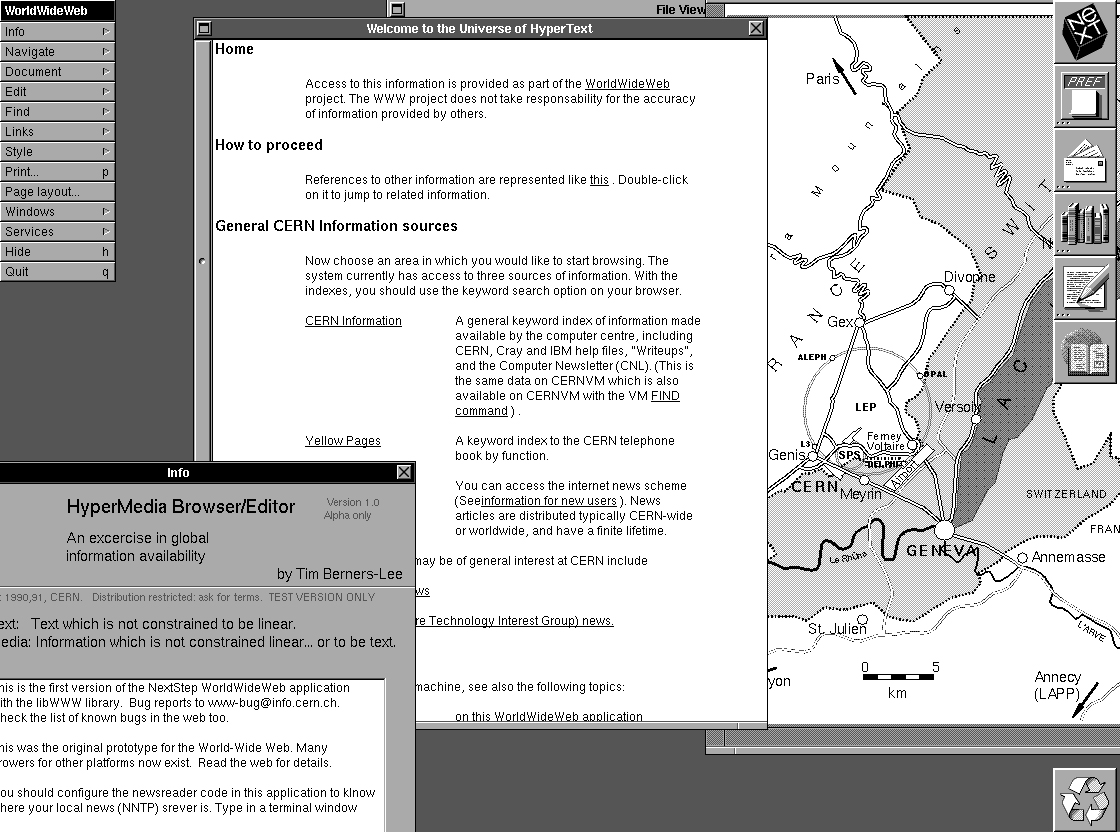History of the Internet
The World Wide Web originally started out as a document exchange network to meet the demand for automated information-sharing between academics across the world.

Running on a NeXT computer at CERN, the first ever Web page was a simple HTML document containing links to the project itself and a few other technical details. The first ever web browser had many features of current Web browsers and also included the ability to modify pages from directly inside the browser.

With its ubiquity and maturation, the complexity of this network and its associated technologies grew. Not only was it required for it to be available across a wide range of operating systems and devices, but the kind of content being exchanged also vastly changed. One of the languages that emerged as a robust and efficient way to access and interact with elements of an HTML document was JavaScript. Contrasted against various other technologies like ActiveX, JavaBeans, or Flash, JavaScript had a lower barrier to entry. This meant that literally anyone, even those who weren't technical, could enhance their website with dynamic content with the use of JavaScript.
This led to the dominance of JavaScript as the de facto compilation target for various other languages and its ubiquity, as we know it today.